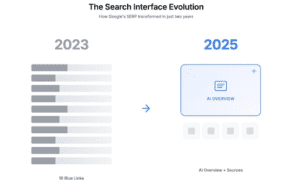When it comes to Rolex, few models carry the gravitas of the Day-Date. Nicknamed the “President” for good reason, this iconic watch has graced the wrists of world leaders, visionaries, and those who appreciate luxury with purpose. In the UK’s flourishing pre-owned market, the Rolex Day-Date presents an intriguing dilemma for collectors: go vintage with gold or lean into modernity with platinum?
While both choices reflect prestige and taste, they tell remarkably different stories. Here’s a closer look at how these two distinct versions of the Day-Date stack up, and what they say about the person who wears them.
Why the Day-Date Matters
Before comparing metals, it’s worth considering why the Day-Date holds such significance. Introduced in 1956, it was the first wristwatch to feature both the date and the day of the week spelled out in full. It wasn’t just functional, it was symbolic. A Rolex Day-Date was never simply about timekeeping; it was about authority, refinement, and influence.
From its signature President bracelet to its polished fluted bezel, every element of the Day-Date communicates self-assured elegance. That legacy continues today in both the vintage and modern variants.
The Charm of Vintage Gold
There’s something undeniably timeless about a vintage yellow gold Rolex Day-Date. Whether it’s a 1803 from the 1970s or a slightly later 18238, these pieces exude a kind of charm that modern designs often struggle to match.
Gold Day-Dates from previous decades tend to feature warmer tones, smaller cases (typically 36mm), and pie-pan dials with unique patina. For those who appreciate the storytelling aspect of a watch, vintage gold models offer a tangible connection to an earlier era of craftsmanship and culture.
And then there’s the weight of symbolism: in its heyday, the gold Day-Date was the go-to watch of politicians, musicians, and business icons. It didn’t just tell time, it marked power.
Today, pre-owned Rolex Day-Date watches in gold represent an opportunity to own a piece of that heritage. With vintage style making a strong comeback, these models are being rediscovered by a new generation of collectors across the UK.
The Allure of Modern Platinum
On the flip side is platinum: cool, weighty, and whisper-quiet in its luxury. Modern platinum Day-Dates, particularly in 40mm references like the 228206, reflect a new kind of prestige. These watches are sleek, discreet, and engineered with Rolex’s latest advancements in movement technology.
Platinum has a unique sheen that differs from steel or white gold. It doesn’t shout, but it never goes unnoticed. And with dials like ice blue or meteorite, these watches introduce subtle yet striking details that feel refreshingly contemporary.
The Day-Date in platinum is often chosen by those who favour sophistication without flash. It appeals to individuals who prefer their success to speak through restraint rather than recognition.
In the UK, demand for these understated pieces is growing. Many high-net-worth buyers are now turning to used Rolex Day-Date watches in platinum as an alternative to more overt displays of wealth.
Wearability and Lifestyle Fit
Choosing between vintage gold and modern platinum also depends on how you wear your watch. Gold carries tradition, warmth, and flair, it’s ideal for those who lean into classic tailoring and appreciate nostalgic elegance.
Platinum, on the other hand, complements minimalist wardrobes and fits effortlessly into both formal and casual settings. It’s heavier on the wrist, but that heft is part of its appeal, it feels substantial without being showy.
For UK professionals, it can come down to how the watch fits into daily life. A gold Day-Date might be your go-to for occasions and statements. Platinum may serve as your everyday piece that pairs just as well with a navy suit as it does with knitwear and denim.
Investment Value and Market Trends
In the pre-owned space, both vintage gold and modern platinum Day-Dates hold value in different ways. Gold references, especially earlier models in excellent condition with original dials and box sets, have seen steady appreciation in the UK market.
Platinum Day-Dates, due to their higher retail prices and limited production, tend to hold their value exceptionally well, especially in configurations with sought-after dials. While neither should be purchased solely as an investment, it’s worth noting that each carries strong long-term potential.
In particular, used Rolex Day-Date watches from transitional eras, such as the late ‘90s to early 2000s, often offer excellent value, combining vintage appeal with modern dependability.
Which One Is Right for You?
There’s no wrong answer, only personal preference. If your style leans toward classic opulence and historical resonance, vintage gold is likely your match. If you prefer subtle luxury, cutting-edge mechanics, and quiet confidence, platinum is probably the way to go.
Either way, the Day-Date is a timeless companion that tells more than time. It tells the world who you are and what you value. And whether you choose a vintage icon or a modern masterpiece, you’ll be wearing one of the most iconic watches ever created.
In the world of pre-owned luxury, few choices offer such a rich divide between classic and contemporary. But both options point to the same truth: the Rolex Day-Date is, and always will be, a statement that endures.



































